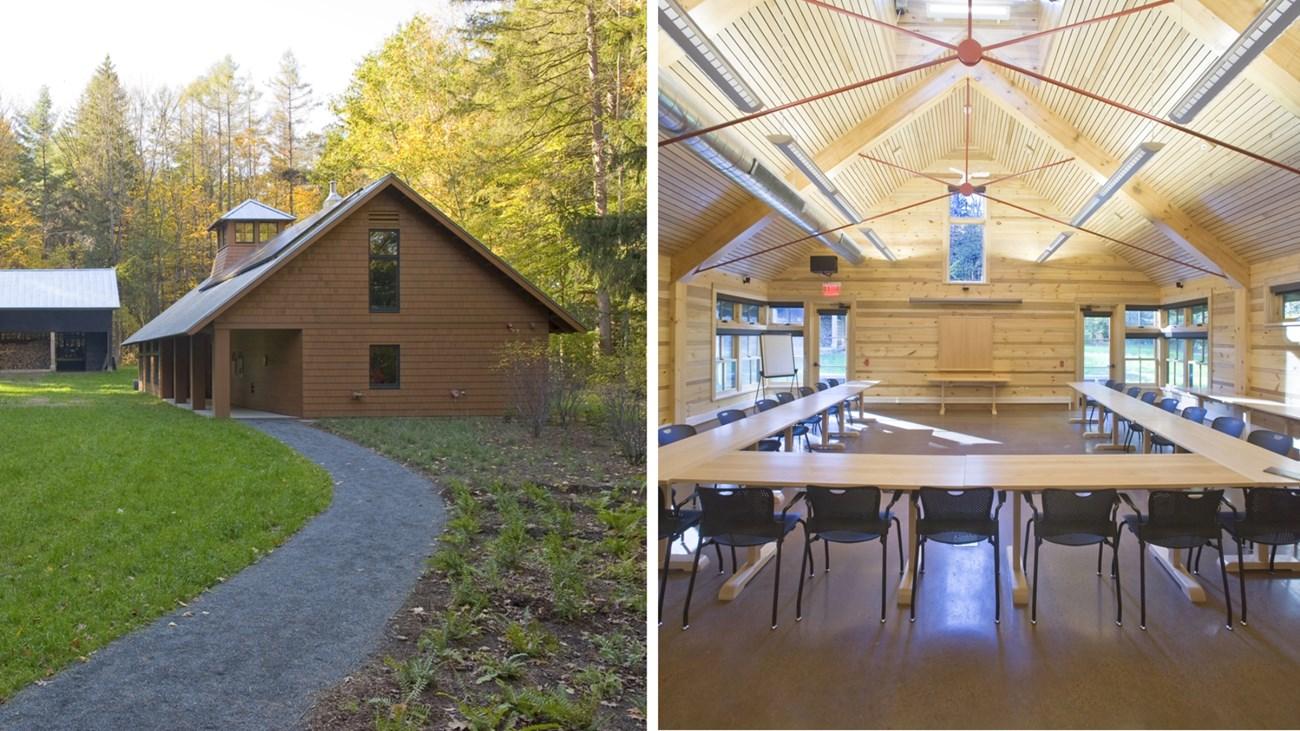
San Ramon: The Gem of the East Bay
Discover San Ramon, California: A blend of natural beauty, cultural richness, and modern amenities in the heart of the East Bay.
Nestled in the heart of California's East Bay, San Ramon is a picturesque city that offers a harmonious blend of suburban tranquility and vibrant community life. Known for its beautiful landscapes, San Ramon is surrounded by rolling hills and lush parks, making it a paradise for nature lovers and outdoor enthusiasts. The city's extensive trail system, including the Iron Horse Regional Trail, invites visitors to explore its scenic beauty on foot or by bike. San Ramon is not just about natural beauty; it is also a hub of cultural and recreational activities. The Dougherty Valley Performing Arts Center hosts a variety of shows and events, from theater performances to music concerts, ensuring there's always something exciting happening. For history buffs, the Forest Home Farms Historic Park provides a glimpse into the region's agricultural past, complete with preserved buildings and interactive exhibits. Shopping and dining in San Ramon are equally delightful experiences. The city boasts a range of shopping centers and dining options, from quaint local cafes to upscale restaurants. The Bishop Ranch complex is a notable landmark, offering a mix of retail, dining, and entertainment that caters to all tastes and preferences. Whether you're looking to relax in a serene environment or engage in dynamic activities, San Ramon has something for everyone to enjoy.
Local tips in San Ramon
- Visit during spring or fall for the best weather and outdoor activities.
- Explore the Iron Horse Regional Trail for scenic walking and biking routes.
- Check the schedule at the Dougherty Valley Performing Arts Center for live performances.
- Spend a day at Forest Home Farms Historic Park to learn about local history.
- Don't miss the dining and shopping options at Bishop Ranch.
San Ramon: The Gem of the East Bay
Nestled in the heart of California's East Bay, San Ramon is a picturesque city that offers a harmonious blend of suburban tranquility and vibrant community life. Known for its beautiful landscapes, San Ramon is surrounded by rolling hills and lush parks, making it a paradise for nature lovers and outdoor enthusiasts. The city's extensive trail system, including the Iron Horse Regional Trail, invites visitors to explore its scenic beauty on foot or by bike. San Ramon is not just about natural beauty; it is also a hub of cultural and recreational activities. The Dougherty Valley Performing Arts Center hosts a variety of shows and events, from theater performances to music concerts, ensuring there's always something exciting happening. For history buffs, the Forest Home Farms Historic Park provides a glimpse into the region's agricultural past, complete with preserved buildings and interactive exhibits. Shopping and dining in San Ramon are equally delightful experiences. The city boasts a range of shopping centers and dining options, from quaint local cafes to upscale restaurants. The Bishop Ranch complex is a notable landmark, offering a mix of retail, dining, and entertainment that caters to all tastes and preferences. Whether you're looking to relax in a serene environment or engage in dynamic activities, San Ramon has something for everyone to enjoy.
When is the best time to go to San Ramon?
Iconic landmarks you can’t miss
Diablo Plaza
Experience shopping and dining like never before at Diablo Plaza, San Ramon's premier shopping destination with diverse stores and eateries.

Las Trampas Regional Wilderness Park
Explore the stunning landscapes and diverse wildlife at Las Trampas Regional Wilderness Park, a perfect spot for hiking, picnicking, and outdoor adventures in California.

Blackhawk Museum
Discover the captivating art and classic cars at Blackhawk Museum in Danville, California – a cultural gem for all ages.

Shops At Bishop Ranch
Experience the vibrant shopping and dining at Shops At Bishop Ranch, a premier destination in San Ramon, California.

City Center Bishop Ranch
Explore City Center Bishop Ranch in San Ramon, where shopping, dining, and entertainment come together in a vibrant outdoor setting.

San Ramon Athan Downs
Experience the natural beauty and family-friendly atmosphere of San Ramon Athan Downs, a perfect park for relaxation and outdoor fun.

Canyon Lakes Golf Course
Discover the beauty of Canyon Lakes Golf Course in San Ramon, where stunning landscapes meet exceptional golfing experiences for all skill levels.

The Slanted Door San Ramon
Discover the rich flavors of Vietnam at The Slanted Door San Ramon, a modern dining experience blending tradition with contemporary tastes.

Gateway Center
Discover the vibrant shopping experience at Gateway Center in San Ramon, California—where retail therapy meets local culture and community.

Magnolia Square S.C.
Explore Magnolia Square Shopping Center in San Ramon for a vibrant shopping experience, diverse dining options, and lively community events.

Bishop Ranch Regional Preserve
Explore the stunning landscapes and diverse wildlife at Bishop Ranch Regional Preserve, a serene nature haven in San Ramon, California.
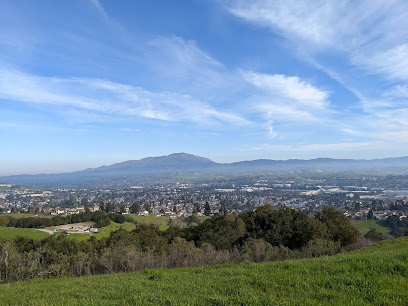
Lakeside BR 2600
Experience the perfect blend of nature and professionalism at Lakeside BR 2600, your ultimate business retreat in San Ramon, California.

Monument Car Parts
Discover Monument Car Parts in San Ramon, CA—your destination for top-quality auto parts, exceptional service, and expert advice for all your automotive needs.

San Ramon Community Center
Explore the vibrant San Ramon Community Center, where recreation, events, and community spirit come together in California's beautiful landscape.
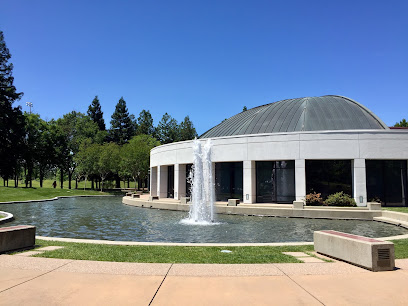
Eugene O'Neill National Historic Site
Discover the Eugene O'Neill National Historic Site, where nature and literary history converge in the serene hills of Danville, California.
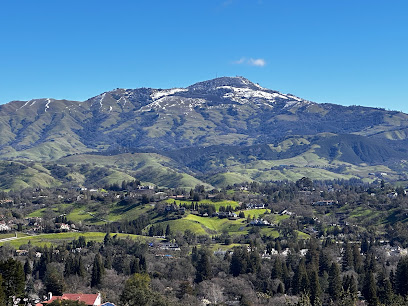
Unmissable attractions to see
Oakland Zoo
Experience the unique blend of wildlife and nature at Oakland Zoo, where conservation meets fun for all ages in the heart of California.

Six Flags Hurricane Harbor Concord
Dive into fun at Six Flags Hurricane Harbor Concord, a premier water park with thrilling slides, family attractions, and relaxing vibes in California.
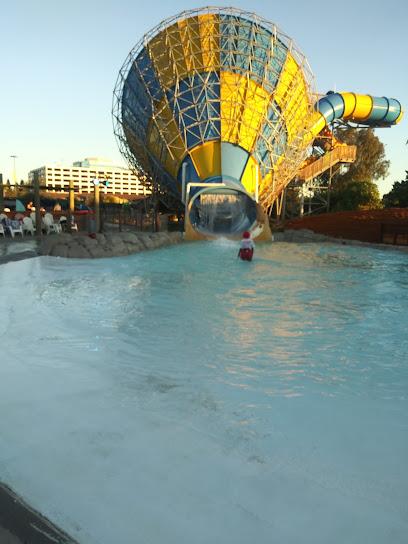
Central Park
Explore Central Park in San Ramon, a serene escape offering lush landscapes, family-friendly activities, and vibrant community events for all ages.

Las Trampas Regional Wilderness Park
Experience the natural beauty and outdoor adventures at Las Trampas Regional Wilderness Park, a perfect retreat for nature lovers in California.

Rancho San Ramon Community Park
Experience the beauty of nature at Rancho San Ramon Community Park, a perfect escape for families and outdoor enthusiasts in San Ramon, California.

John Muir National Historic Site
Visit the John Muir National Historic Site to discover the inspiring legacy of America's conservation pioneer in beautiful California.

San Ramon Athan Downs
Explore the lush landscapes and vibrant recreational facilities of San Ramon Athan Downs, a perfect getaway for families and nature lovers alike.
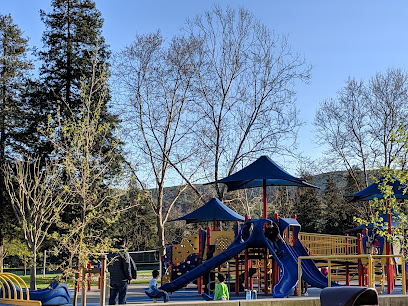
The Ruth Bancroft Garden & Nursery
Explore the serenity of The Ruth Bancroft Garden & Nursery, a stunning botanical oasis featuring diverse drought-tolerant plants in Walnut Creek, California.

Bishop Ranch Regional Preserve
Discover the natural beauty of Bishop Ranch Regional Preserve, a serene escape in California with stunning trails and diverse wildlife.

Zscape Games
Experience thrilling adventures and unique puzzles at Zscape Games, the ultimate escape room destination in San Ramon, California.

San Ramon Hidden Valley Park
Explore San Ramon's Hidden Valley Park, a serene retreat offering stunning views, recreational activities, and a perfect escape into nature.

Six Pillars Park
Discover the beauty of nature at Six Pillars Park, a serene escape in San Ramon, California, perfect for families and outdoor enthusiasts.

Mitchell Katz Winery
Explore the exquisite wines and stunning landscapes of Mitchell Katz Winery in Livermore Valley, California - a must-visit for wine enthusiasts and travelers.

Forest Home Farms Historic Park
Explore the rich history and natural beauty of Forest Home Farms Historic Park in San Ramon, CA, where agriculture meets education and fun for all ages.

Reinhardt Redwood Regional Park Redwood Gate
Discover the tranquility of Reinhardt Redwood Regional Park, where towering redwoods and serene trails create a perfect nature escape in Oakland, California.

Essential places to dine
In-N-Out Burger
Discover In-N-Out Burger in San Ramon: iconic burgers crafted with fresh ingredients in a nostalgic diner setting.

Fieldwork Brewing Company - San Ramon
Experience the best of craft brewing at Fieldwork Brewing Company in San Ramon—where innovative flavors meet vibrant community vibes.
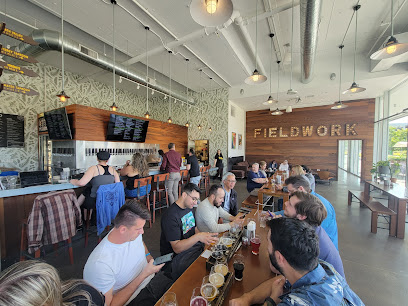
Clementine's
Experience authentic Cajun cuisine at Clementine's in San Ramon—where every meal is a celebration of flavor and southern hospitality.

Shish Grill
Discover authentic Lebanese cuisine at Shish Grill in San Ramon - where every bite tells a story of Mediterranean heritage.

Katy's Korner
Discover Katy's Korner: Your go-to destination for delectable American breakfasts and brunches in San Ramon.

City Center Bishop Ranch
Discover City Center Bishop Ranch - A premier destination in San Ramon offering exceptional dining, shopping experiences, and engaging entertainment for all.

Inchin's Bamboo Garden
Discover Inchin's Bamboo Garden: A Pan Asian culinary delight blending Chinese and Indian flavors in a vibrant setting.

Esin Restaurant & Bar
Experience exquisite American cuisine at Esin Restaurant & Bar in Danville – where flavor meets sophistication.

Brass Door
Discover Brass Door: A premier steakhouse in San Ramon offering fine dining, vibrant atmosphere & sports entertainment.

Dos Coyotes Border Cafe
Discover authentic Mexican flavors at Dos Coyotes Border Cafe in San Ramon - where delicious burritos and tacos meet lively ambiance.

Andaman Thai
Experience authentic Thai flavors at Andaman Thai in San Ramon - where every dish tells a story.

Poke Don
Discover fresh and flavorful poke bowls at Poke Don in San Ramon – where Hawaiian tradition meets Asian flair in every bite.

Mendocino Farms
Discover the deliciousness of Mendocino Farms in San Ramon – where artisanal sandwiches meet fresh salads in an inviting atmosphere.

The Kebab Shop
Discover delectable Mediterranean cuisine at The Kebab Shop in San Ramon – where fresh ingredients meet authentic flavors.

Primavera Ristorante
Discover authentic Italian flavors at Primavera Ristorante in San Ramon—where every meal feels like a celebration.

Markets, malls and hidden boutiques
Diablo Plaza
Discover Diablo Plaza in San Ramon: a vibrant shopping destination with diverse stores, delightful eateries, and fresh grocery options for every traveler.

Shops At Bishop Ranch
Discover a diverse shopping and dining experience at the Shops at Bishop Ranch, a premier destination in San Ramon, California.

Crow Canyon Commons
Discover Crow Canyon Commons in San Ramon for a vibrant shopping experience, delightful dining, and community events that capture local culture.

Sports Basement San Ramon
Discover your outdoor adventure at Sports Basement San Ramon, the ultimate destination for sporting goods, bicycle rentals, and outdoor gear in California.

The Marketplace Shopping Center
Discover the vibrant Marketplace Shopping Center in San Ramon, CA, a premier destination for shopping, dining, and community events.
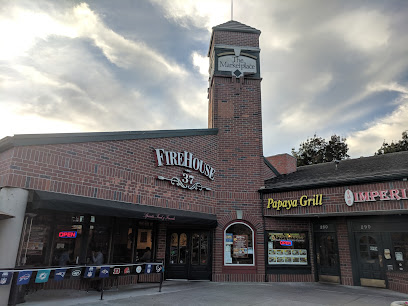
City Center Bishop Ranch
Explore City Center Bishop Ranch: A shopping haven with boutiques, restaurants, and entertainment in San Ramon, California.
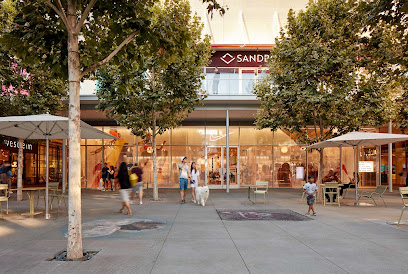
Whole Foods Market
Discover Whole Foods Market in San Ramon, where organic meets gourmet in a delightful grocery shopping experience.

Target
Discover convenience and variety at Target San Ramon, your go-to destination for clothing, home goods, electronics, and more.

Country Club Village
Explore the diverse shopping, dining, and entertainment options at Country Club Village, a premier shopping destination in San Ramon, California.

Sprouts Farmers Market
Explore the vibrant flavors of health and organic living at Sprouts Farmers Market in San Ramon, your go-to destination for fresh produce and wholesome groceries.

Gateway Center
Discover Gateway Center, a vibrant shopping mall in San Ramon offering diverse shops, delectable dining, and family-friendly entertainment.

HomeGoods
Explore HomeGoods in San Ramon for unique home decor and furniture that captures California's charm, all at affordable prices.
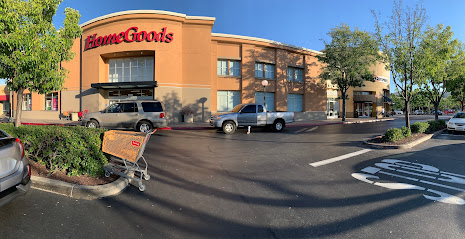
Magnolia Square S.C.
Discover Magnolia Square S.C. in San Ramon, a vibrant shopping mall with diverse retail options and delightful dining experiences for every visitor.

The Plaza at Gale Ranch
Discover shopping, dining, and entertainment at The Plaza at Gale Ranch, the ultimate destination for tourists in San Ramon, California.

Learning Express
Experience the joy of learning through play at Learning Express, San Ramon's premier destination for unique gifts, toys, and educational fun.

Essential bars & hidden hideouts
Fieldwork Brewing Company - San Ramon
Discover the vibrant atmosphere and diverse selection of craft beers at Fieldwork Brewing Company, a must-visit brewpub in San Ramon, CA.
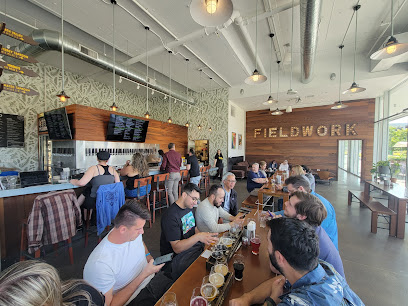
Clementine's
Discover the vibrant flavors of Cajun cuisine at Clementine's, a cozy bar and restaurant in San Ramon offering delicious breakfast and Southern specialties.
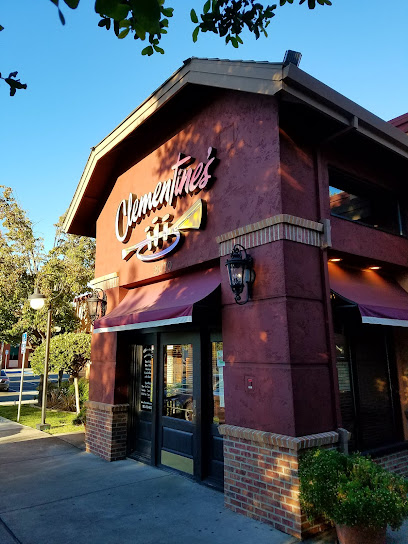
Shish Grill
Savor the authentic taste of Lebanese cuisine at Shish Grill, a must-visit restaurant in San Ramon for Mediterranean food lovers.

Brass Door
Experience the finest American cuisine and vibrant sports bar atmosphere at Brass Door in San Ramon, a culinary destination for every palate.

Three Sheets Craft Beer Bar
Experience the best of craft beer at Three Sheets Craft Beer Bar with a vibrant atmosphere and an extensive selection of brews.

Delarosa Bishop Ranch
Experience authentic Italian cuisine at Delarosa in Bishop Ranch, a vibrant restaurant offering a delightful dining experience in San Ramon.

Crown Billiards
Experience the vibrant nightlife at Crown Billiards, a premier pool hall in San Ramon offering fun, affordable games, and a lively bar atmosphere.

The Growler
Discover the vibrant craft beer scene at The Growler, a cozy restaurant in Danville offering unique brews and delightful cuisine for every palate.

Gianni's Italian Bistro
Experience authentic Italian flavors at Gianni's Italian Bistro, where quality ingredients meet exceptional service in a cozy atmosphere.

Curry Up Now
Discover the vibrant flavors of India at Curry Up Now, where casual dining meets a delicious array of vegan and vegetarian options.
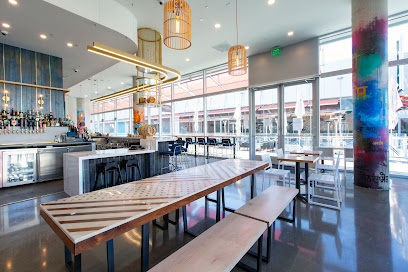
Bamboo Sushi
Discover Bamboo Sushi, where exquisite sushi meets innovative Asian fusion in a chic dining atmosphere in San Ramon.

Auburn Lounge
Experience the vibrant nightlife at Auburn Lounge in Danville, where live music meets a cozy bar atmosphere, perfect for relaxation and enjoyment.

Gaucho Brazilian Steakhouse n Nightclub
Discover the vibrant flavors and lively atmosphere of Gaucho Brazilian Steakhouse & Nightclub in San Ramon, where delicious food meets unforgettable nightlife.

The Back Lounge
Experience the vibrant atmosphere and expertly crafted cocktails at The Back Lounge, Dublin's favorite cocktail bar for locals and visitors alike.

Canyon Lakes Brewery
Discover the perfect blend of craft beer and delicious food at Canyon Lakes Brewery in San Ramon, California, a must-visit culinary destination.

Local Phrases
-
- HelloHowdy
[haw-dee] - GoodbyeSee ya
[see yah] - YesYep
[yep] - NoNope
[nope] - Please/You're welcomePlease
[pleez] - Thank youThanks
[thanks] - Excuse me/SorryExcuse me
[ex-kyooz mee] - How are you?How's it goin'?
[hows it go-in] - Fine. And you?Fine. You?
[fine. yoo] - Do you speak English?You speak English?
[yoo speek ing-glish] - I don't understandI don't get it
[eye don't get it]
- HelloHowdy
-
- I'd like to see the menu, pleaseCan I see the menu?
[kan eye see the menu] - I don't eat meatI'm vegetarian
[im ve-juh-tair-ee-an] - Cheers!Cheers!
[cheers] - I would like to pay, pleaseCheck, please
[chek, please]
- I'd like to see the menu, pleaseCan I see the menu?
-
- Help!Help!
[help] - Go away!Get lost!
[get lost] - Call the Police!Call the cops!
[call the cops] - Call a doctor!Get a doc!
[get a doc] - I'm lostI'm lost
[eye'm lost] - I'm illI'm sick
[eye'm sik]
- Help!Help!
-
- I'd like to buy...I wanna buy...
[eye wanna buy] - I'm just lookingJust browsing
[just brows-ing] - How much is it?How much?
[how much] - That's too expensiveToo pricey
[too pry-see] - Can you lower the price?Can you do better?
[kan yoo do bet-ter]
- I'd like to buy...I wanna buy...
-
- What time is it?What's the time?
[whats the time] - It's one o'clockIt's one
[its one] - Half past (10)Half ten
[half ten] - MorningMorning
[morning] - AfternoonAfternoon
[afternoon] - EveningEvening
[evening] - YesterdayYesterday
[yester-day] - TodayToday
[to-day] - TomorrowTomorrow
[tomor-row] - 1One
[wun] - 2Two
[too] - 3Three
[three] - 4Four
[four] - 5Five
[five] - 6Six
[six] - 7Seven
[seven] - 8Eight
[eight] - 9Nine
[nine] - 10Ten
[ten]
- What time is it?What's the time?
-
- Where's a/the...?Where's the...?
[wheres the] - What's the address?What's the address?
[whats the address] - Can you show me (on the map)?Can you show me?
[kan yoo show me] - When's the next (bus)?When's the next one?
[whens the next one] - A ticket (to ....)One ticket (to ...)
[wun ticket (to)]
- Where's a/the...?Where's the...?
History of San Ramon
-
Long before European settlers arrived, the San Ramon Valley was inhabited by the Seunen tribe of the Ohlone people. These indigenous people lived off the rich natural resources of the area, including the abundant wildlife and plant life. They practiced seasonal migration and lived in harmony with the land, leaving behind artifacts and shell mounds that provide a glimpse into their way of life.
-
In the late 18th century, Spanish explorers ventured into the San Ramon Valley. The establishment of Mission San José in 1797 marked the beginning of European influence in the region. The mission system aimed to convert the local indigenous population to Christianity and integrate them into Spanish colonial society. The land around San Ramon was used for cattle grazing and agriculture to support the mission.
-
After Mexico gained independence from Spain in 1821, the mission lands were secularized, and large tracts of land were granted to private individuals. The San Ramon Valley was divided into ranchos, with Rancho San Ramon being one of the most significant. José María Amador, a prominent Californio ranchero, received the grant for Rancho San Ramon in 1834. These ranchos became centers of cattle ranching and agriculture, shaping the early economy of the region.
-
Following the Mexican-American War and the Treaty of Guadalupe Hidalgo in 1848, California became a part of the United States. American settlers began to move into the San Ramon Valley, attracted by the fertile land and opportunities for farming. The discovery of gold in California also brought an influx of people to the state, further boosting the population. By the late 19th century, San Ramon had developed into a thriving agricultural community, known for its orchards, vineyards, and dairy farms.
-
The arrival of the Southern Pacific Railroad in the 1890s was a pivotal moment in San Ramon's history. The railroad connected San Ramon to larger markets, facilitating the transport of agricultural products and contributing to the local economy. The establishment of a train depot in San Ramon also made it a hub for travelers and commerce, spurring further growth and development in the area.
-
The mid-20th century saw a transformation in San Ramon as it evolved from a rural community into a suburban city. The post-World War II economic boom and the expansion of the Bay Area led to rapid development in San Ramon. Housing developments, shopping centers, and schools were built to accommodate the growing population. The construction of Interstate 680 in the 1960s further accelerated suburbanization, making San Ramon a desirable location for commuters working in nearby cities.
-
On July 1, 1983, San Ramon was officially incorporated as a city. This milestone marked a new chapter in its history, giving residents greater control over local governance and development. The city continued to grow, attracting businesses and residents with its quality of life, excellent schools, and beautiful parks. The establishment of Bishop Ranch Business Park in the 1980s brought major corporations to San Ramon, including Chevron and AT&T, solidifying its status as a key economic center in the region.
-
San Ramon boasts a rich cultural heritage and a wide array of recreational amenities. The Dougherty Valley Performing Arts Center and the San Ramon Community Center host numerous cultural events, including theater productions, concerts, and art exhibits. The city's extensive park system, including Central Park and the Iron Horse Regional Trail, offers residents and visitors ample opportunities for outdoor activities. San Ramon's dedication to preserving its history is evident in landmarks such as the Forest Home Farms Historic Park, which showcases the area's agricultural past.
San Ramon Essentials
-
San Ramon is located in the San Francisco Bay Area of California. The nearest major airport is Oakland International Airport (OAK), approximately 27 miles away. Another option is San Francisco International Airport (SFO), which is about 38 miles from San Ramon. From either airport, you can rent a car, take a shuttle service, or use rideshare apps like Uber and Lyft to reach San Ramon. Public transportation is also available, with BART (Bay Area Rapid Transit) connecting San Francisco and Oakland to nearby Dublin/Pleasanton station, from where you can take a bus or taxi to San Ramon.
-
San Ramon is well-connected by a network of roads and public transportation. The County Connection bus service operates several routes within the city, making it convenient to travel locally. For regional travel, you can use BART, with the nearest station being Dublin/Pleasanton. Car rentals are widely available and are a popular option for exploring the surrounding areas. Additionally, rideshare services like Uber and Lyft are readily accessible. For those who prefer cycling, San Ramon boasts numerous bike lanes and trails.
-
The official currency in San Ramon, as in the rest of the United States, is the US Dollar (USD). Credit and debit cards are widely accepted in most establishments, including hotels, restaurants, and shops. ATMs are plentiful, and you can easily withdraw cash if needed. Mobile payment options like Apple Pay and Google Wallet are also commonly accepted. It is advisable to carry some cash for small purchases or in case you visit places that do not accept cards.
-
San Ramon is generally considered a safe city for tourists. However, it is always prudent to take standard safety precautions. Avoid leaving valuables in your car and be cautious when walking alone at night. There are no specific areas with high crime rates targeting tourists, but staying alert and aware of your surroundings is always a good practice.
-
In case of an emergency, dial 911 for immediate assistance from police, fire, or medical services. San Ramon has several medical facilities, including San Ramon Regional Medical Center, which provides comprehensive healthcare services. It is recommended to have travel insurance that covers medical emergencies. For minor health issues, numerous pharmacies are available throughout the city where you can purchase over-the-counter medications.
-
Fashion: Do dress in comfortable, casual attire suitable for the California climate. San Ramon is a relatively relaxed city, but avoid overly revealing clothing. Religion: Do respect local customs and traditions, particularly when visiting religious sites. Public Transport: Do be courteous to fellow passengers and give up your seat to elderly or disabled individuals. Don't play loud music or talk loudly on your phone. Greetings: Do greet people with a friendly smile and a handshake. Californians are generally friendly and open. Eating & Drinking: Do try local cuisine and be open to new food experiences. Don't leave large tips; a 15-20% tip is standard in restaurants.
-
To experience San Ramon like a local, visit the Farmers Market at Bishop Ranch on Saturdays, where you can buy fresh produce and local goods. Engage with residents at Central Park, a popular spot for picnics and outdoor activities. Don't miss the Iron Horse Regional Trail, perfect for walking, jogging, and cycling. For a unique cultural experience, attend one of the local festivals or events hosted throughout the year. Exploring the city’s parks and open spaces, such as the Las Trampas Regional Wilderness, will give you a taste of the natural beauty that locals cherish.
Trending Landmark in San Ramon
-
Diablo Plaza
-
Las Trampas Regional Wilderness Park
-
Blackhawk Museum
-
Shops At Bishop Ranch
-
City Center Bishop Ranch
-
San Ramon Athan Downs
-
Canyon Lakes Golf Course
-
The Slanted Door San Ramon
-
Gateway Center
-
Magnolia Square S.C.
-
Bishop Ranch Regional Preserve
-
Lakeside BR 2600
-
Monument Car Parts
-
San Ramon Community Center
-
Eugene O'Neill National Historic Site
Nearby Cities to San Ramon
-
Things To Do in Danville
-
Things To Do in Castro Valley
-
Things To Do in Pleasanton
-
Things To Do in Hayward
-
Things To Do in San Lorenzo
-
Things To Do in San Leandro
-
Things To Do in Livermore
-
Things To Do in Walnut Creek
-
Things To Do in Union City
-
Things To Do in Fremont
-
Things To Do in Concord
-
Things To Do in Newark
-
Things To Do in Oakland
-
Things To Do in Brentwood
-
Things To Do in Antioch



